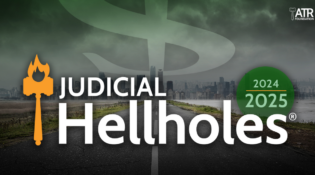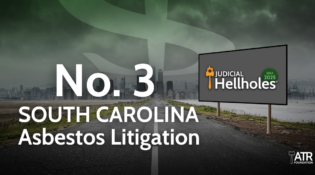THE PLAINTIFFS’ BAR COMMANDS NEW JERSEY’S LEGISLATURE
 In November 2021, New Jersey held statewide elections for its legislators and governorship. As a result of surprising outcomes in those elections, State Senator Nicholas Scutari is New Jersey’s new Senate President. Senator Scutari replaced outgoing Senate President Steve Sweeney, a moderate Democrat who served as a balancing force for over a decade when it came to pushing back against the trial bar’s liability- expanding agenda.
In November 2021, New Jersey held statewide elections for its legislators and governorship. As a result of surprising outcomes in those elections, State Senator Nicholas Scutari is New Jersey’s new Senate President. Senator Scutari replaced outgoing Senate President Steve Sweeney, a moderate Democrat who served as a balancing force for over a decade when it came to pushing back against the trial bar’s liability- expanding agenda.
Senate President Scutari is a practicing plaintiffs’ personal injury attorney who previously chaired the Senate Judiciary Committee. Prior to his ascension, Senator Scutari’s legislative agenda was unabashedly pro-plaintiff, and he was resistant to compromise on civil justice reform initiatives. To make things worse, Senator Jon Bramnick, an influential Republican, is also a plaintiffs’ attorney whose priorities often align with those of the plaintiffs’ bar. Against this backdrop, the plaintiffs’ bar now wields outsized power in New Jersey’s Legislature.
Shortly after the November 2021 election, incoming Senate President Scutari immediately began to leverage his leadership position to push his pro-plaintiff agenda – before even formally assuming the role. During the lame duck session, he aggressively pushed legislation entitled the “New Jersey Insurance Fair Conduct Act.” The sponsors of the bill, Senator Scutari and then Assemblyman Bramnick, erroneously claimed that insurance policyholders had no recourse against their auto insurers when they delay payment or make disagreeable settlement offers on uninsured and underinsured motorist (“UM/UIM”) claims. To remedy this supposed problem, the legislation allowed policyholders to bring private civil actions against their auto insurers for any “unreasonable delay or unreasonable denial of a claim for payment of [UM/UIM] benefits under an insurance policy” or any violation of statutorily prohibited insurance trade practices.
The bill did not define an “unreasonable” delay or denial, creating legal uncertainty that will yield years of litigation. It allowed successful claimants to recover “actual verdicts that shall not exceed three times the applicable coverage amount,” as well as pre- and post-judgment interest, reasonable attorney’s fees, and all reasonable litigation expenses.
The proposed legislation was contrary to the traditional understanding of bad faith, which addresses conduct beyond simple negligence or breach of contract. Despite these concerns and at the urging of Senator Scutari, New Jersey Governor Phil Murphy signed the bill into law on January 18, 2022. There is concern that this new law will lead to a significant increase in meritless claims against carriers, which bur- dens the insurance industry in New Jersey and makes it harder to do business in the state.
Later, in July 2022, during the New Jersey Legislature’s budget negotiations, Senator Scutari advanced a large package of legislation seeking to radically upend the state’s automobile insurance market for the benefit of the plaintiffs’ bar. Among other things, the bills sought to increase mandatory minimum insurance coverage for motorists and businesses; diminish certain lawsuit thresholds designed to reduce litigation; radically change personal injury protection coverage and medical expense benefits; and require certain pre- litigation disclosures regarding available insurance coverage.
The net effect of enacting this package of legislation would have been a surge in auto accident litigation and related windfalls for the plaintiffs’ bar and a corresponding increase in insurance costs for New Jersey motorists. Fortunately, only two out of a dozen bills in Senate President Scutari’s package of legislation made it to Governor Murphy’s desk and were signed into law.
Despite enactment of only two of the bills in 2022, Senator Scutari’s agenda remains cause for concern. He is expected to pursue similar pro-plaintiff legislation that will increase the pot of money that the plaintiffs’ bar can access in personal injury litigation, which increases incentives to pursue such cases.



 In November 2021, New Jersey held statewide elections for its legislators and governorship. As a result of surprising outcomes in those elections, State Senator
In November 2021, New Jersey held statewide elections for its legislators and governorship. As a result of surprising outcomes in those elections, State Senator 

